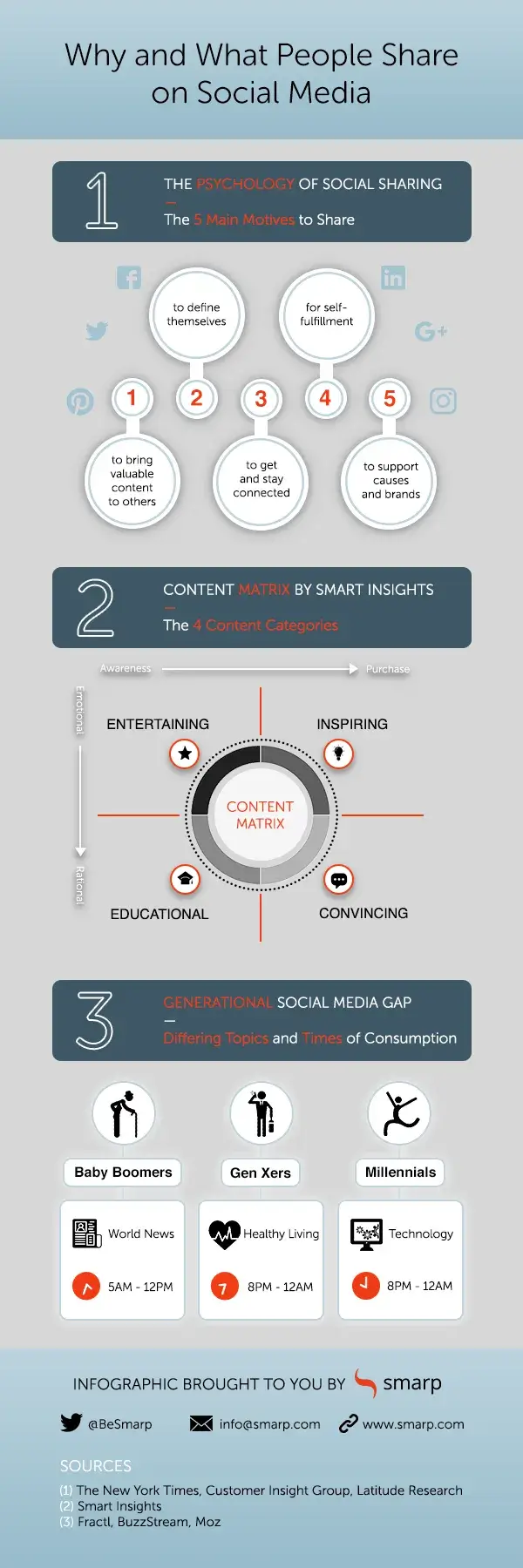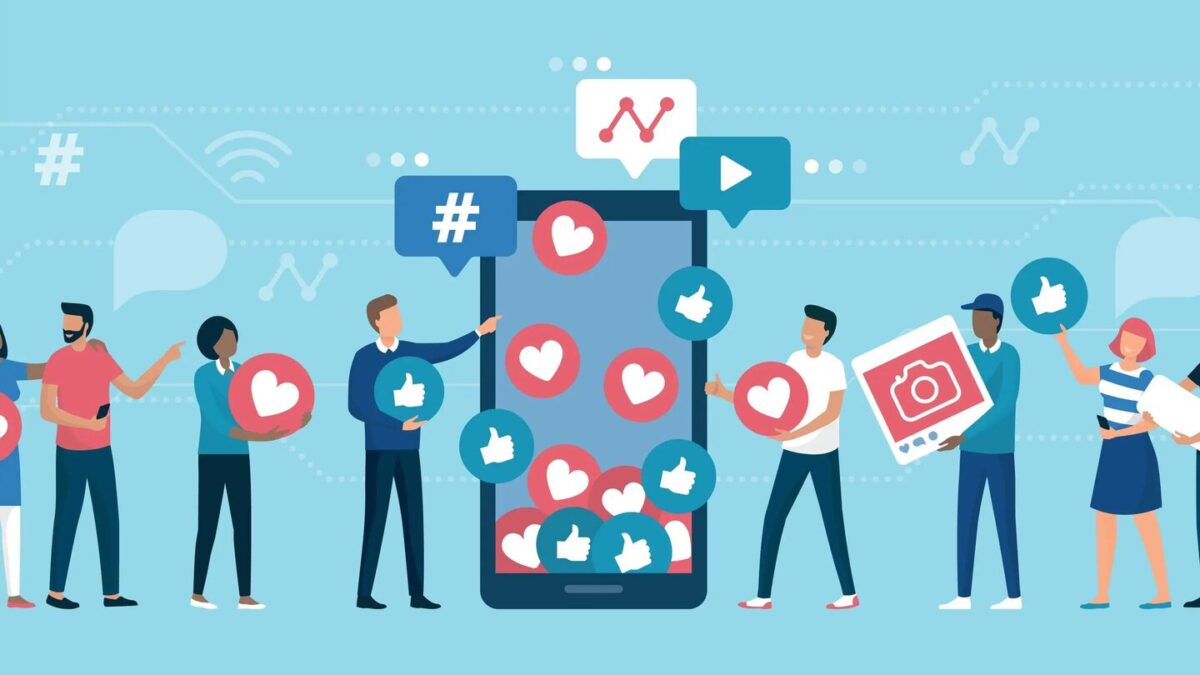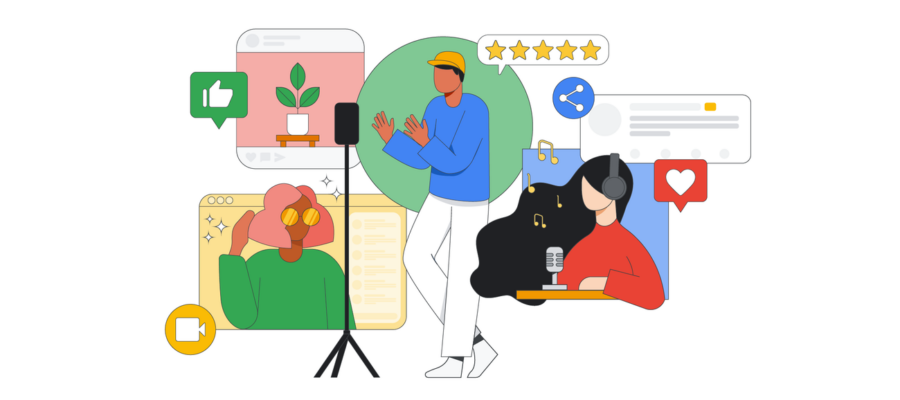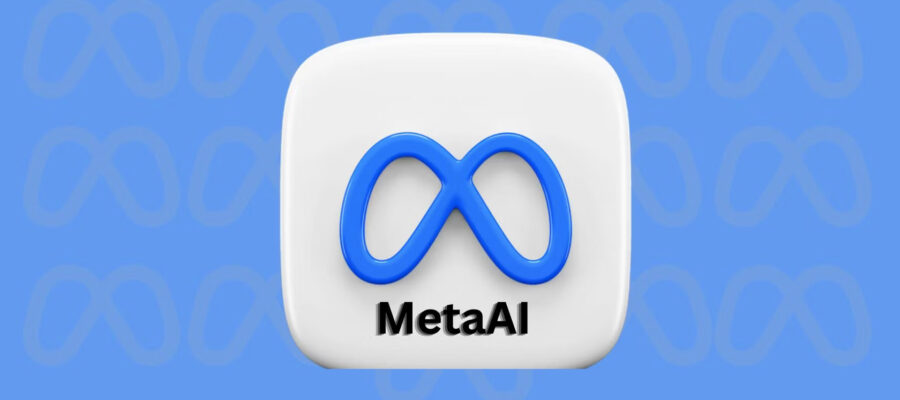
Meta has published its New Guide for Lead Gen Ad Options
15/11/2023
Meta Has Expanded Access to Its Content and Library API To Facilitate Data Research
24/11/2023If you are looking for ways to improve your social media content, and also want to understand the basics of why and what people share, have a look at the below infographic created by the team from Haiilo who share their insights into social media psychology.
The below infographic describes the top five reasons why people share, what they share, and what different age groups share.

The infographic is split into 3 categories:
The Psychology of Social Sharing: 5 Reasons People Share
According to an article written by Harkai, the first category is The Psychology of Social Sharing.
Basically, the first category, says that sharing is caring, and that, also, applies to the content shared on social media. For instance, the New York Times in cooperation with Customer Insight Group and Latitude Research published a study on the psychology of sharing and discussed users’ motivations to share online.
The study’s first finding is that “sharing is human”, as it is an enjoyable act.
The study also uncovered the 5 main reasons why people want to share content:
- To bring valuable, enlightening, and entertaining content to others
- To define themselves to others (and to themselves, too)
- To get and stay connected to others
- For self-fulfillment, to be credited by others for what they shared
- To support causes they believe in and brands they like.
These all come down to one thing: nurturing relationships with others.
The second category is: What People Share on Social Media: The Content Matrix
2. The Content Shared on Social Media
Research done by Chadwick Martin Bailey and iModerate Research Technologies revealed a number of different content types that people share.
These types of content can be:
- Pictures and stories about friends and family
- Funny videos and gifs
- Coupons and discounts
- News articles
- Educational videos
- Informative blog posts and infographics
- Music videos
- Sports news
- Highlight videos and other entertaining content.
The above examples can easily be placed into the content matrix, an idea created by Smart Insights.
The Context Matrix was created in order to help marketers come up with the best content type that resonates with their audience online. More specifically, the matrix scales customer lifecycle stages from awareness to purchase, as well as decision styles from emotional to rational.
The four main content categories the content matrix outlines are the following:
- Entertaining
- Inspiring
- Educational
- Convincing
For example, in the above infographic, the Content Matrix, belongs to the educational content category.
Now, the third category is the Generational Social Media Gap: What Different Age Groups Share
According to a survey “The Generational Content Gap”, the first thing is timing. People share content across different times of the day in each generation.
Take, for instance, the Baby Boomers generation, this generation will usually consume content during the morning hours. Thus, compared to that, both other generations, Millennials and Generation Xers, consume content in the late evening. If you are a marketer and want to reach the right audience, always keep timing in mind!
Then there are 3 types of content consumed by all three generations:
- Blog articles
- Visuals (with images, videos, and memes on the top)
- Comments
When it comes to content categories, all of the groups like to consume content in the field of Entertainment. However, Baby Boomers’ are the largest World News consumers; Gen Xers are very much into Healthy Living and Millennials are Technology fans.
You learn more here
A version of this post was first published on the Red Website Design blog.
Source: Social Media Today
Find more information here: http://bit.ly/2BPQn38
For more information contact us at: [email protected]





